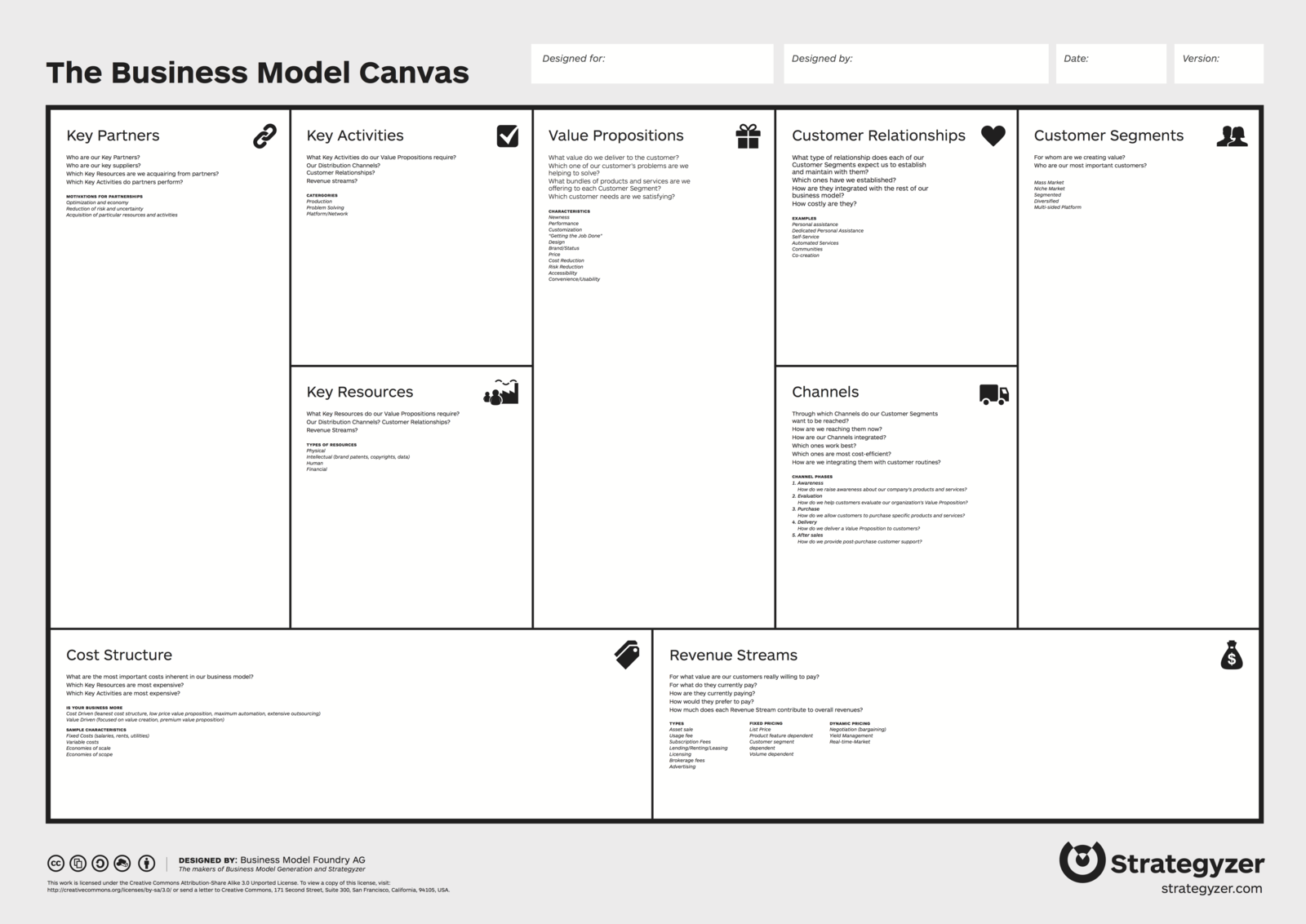A Canvas in our sense is a structured framework that facilitates the analysis, visualization and communication of key elements.
The Origin: Business Model Canvas
The idea of using a canvas to analyse and visualize originated in the groundbreaking book “Business Model Canvas” by Alex Osterwalder and his colleagues.
The invented the idea of providing pre-structured areas to develop and communicate business models.
 Note: Source of the image above is https://commons.wikimedia.org/wiki/File:Business_Model_Canvas.png
Note: Source of the image above is https://commons.wikimedia.org/wiki/File:Business_Model_Canvas.png
Their book with the canvas-approach was an incredible success, with several millions copies sold.
One reason in our opinion was the reduction to an absolute minimum of information. The canvas simply does not leave room for extensive verbose documentation. Canvas users have to focus on the important stuff.
The Canvas-Evolution
Numerous other groups and disciplines created canvases for their own domain or purpose. Below you find a (non-exhaustive) overview of some approaches we consider useful:
- Product Canvas by Roman Pichler
- Lean Canvas by Ash Maurya
- Lean UX Canvas (v2)
- Bounded Context Canvas by the awesome DDD-Crew
- Context Canvas to improve Requirements Engineering, by IREB
- Customer Journey Canvas helps to see how a customer experiences a problem
- Wardley-Mapping Canvas helps teams create a Wardley Map, making strategy a collaborative endavour, allowing technical and business leaders to cooperate on a joint model.
Canvas in Software Architecture
Patrick (one of the contributors of this page) was the first to describe a canvas for software architecture. His original work (now called architecture inception canvas) was influenced mainly by projects creating new systems from scratch - and therefore needed a strong focus on requirements.
Gernot (the second contributor to this page) took a slightly different approach: He needed an approach to document legacy systems with a minimal effort - which resultet in the architecture communication canvas.
Both architecture canvas approaches have been applied to several real-world systems - which are not open-source, and therefore cannot be disclosed in original here!
Examples
Please see our examples page - we strive to provide a useful collection.